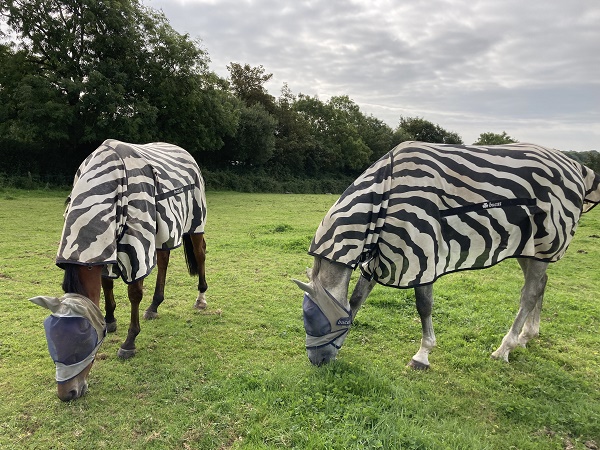Posted: 22nd April 2022 | Back to news feed

The evolution of the zebra’s striped coat has been a hot topic amongst scientists for over 150 years with many in depth studies carried out by scientists on why Zebras have stripes and the connection with flies.

Photo © Mary King
One of the earlier studies to Bucas’ knowledge is that of scientists painting wooden pallets containing vegetable oil, in different patterns. There was one painted with black and white stripes to mimic a zebra, one was all black and the other all white.
The scientists then placed the pallets in a fly-infested field and results showed that there were far more flies in the black painted pallets, fewer in the white painted pallets but the fewest flies of all were found in the pallets painted with thin black and white stripes.
In more recent news, research professionals from the University of Bristol and UC Davis, California, have added further evidence to theories that the primary purpose of zebras' stripes is for avoiding blood-sucking parasites.
An article published in 2019 by University of Bristol on Phys.org highlights a study carried out by Professor Tim Caro, Dr. Martin How and colleagues at a livery in North Somerset. They have been using video analysis techniques to investigate the behaviours of tabanid horse flies around captive zebras and domestic horses.
Their study has shown that stripes don't deter horse flies from a distance, with both zebras and domestic horses experiencing the same rate of circling from the flies. However, video analyses revealed differences in approach speed, with horse flies failing to slow down on approach to zebras, which is essential for a successful landing.
Their study showed that horse flies just seem to fly over zebra stripes or bump into them. Therefore they found far fewer successful landings took place on zebras compared to horses. The reduced ability to land on the zebras’ striped coat is believed to be happening because of the disruption the stripes cause to a flies visual system when approaching at close proximity.
The study has led them to believe that stripes may dazzle flies in some way once they are close enough to see them with their low-resolution eyes.
There has also been studies carried out on painting zebra stripe patterns on cows which has been found to reduce fly bites by 50%. The study, published by Japanese scientists in the journal Plos One, found fly attacks were “significantly reduced” by the disguise. The scientists believe the striped pattern confuses the fly’s motion detection and deters the pests.
Based on lots of in-depth research, Bucas developed and launched their iconic Buzz-Off Zebra fly rug in 2012, a first of its kind, revolutionary design fly rug with thin zebra-like stripes, to confuse and repel flies to keep horses free from the stresses of summer flies for good.
The Bucas Buzz-Off Zebra range of fly and insect protection products with zebra print are made from a specially developed lightweight fine mesh fabric that blocks even the smallest of insects.
The Bucas Buzz-Off range consists of the Buzz-Off Zebra Full Neck Rug available in sizes 5’6”-7’2” and is priced at around £119.00, Buzz-Off Zebra & Neck available in sizes 5’0”-7’0” and is priced at around £126.00, Buzz-Off Rain Zebra & Neck available in sizes 5’0”-7’0” and is priced at around £156.00, Buzz-Off Riding Zebra available in sizes S-XL and is priced at around £96.00. Also available are a range of Buzz-Off Zebra Fly Masks.
For further information please contact Zebra Products on +44(0)1352 763350 or visit www.zebraproducts.co.uk
The Equestrian Index newsfeed is compiled from articles submitted by advertising members and expresses the opinions of those members. Watsons Directories Ltd shall not be held liable for any inaccuracies or mis-statements therein.